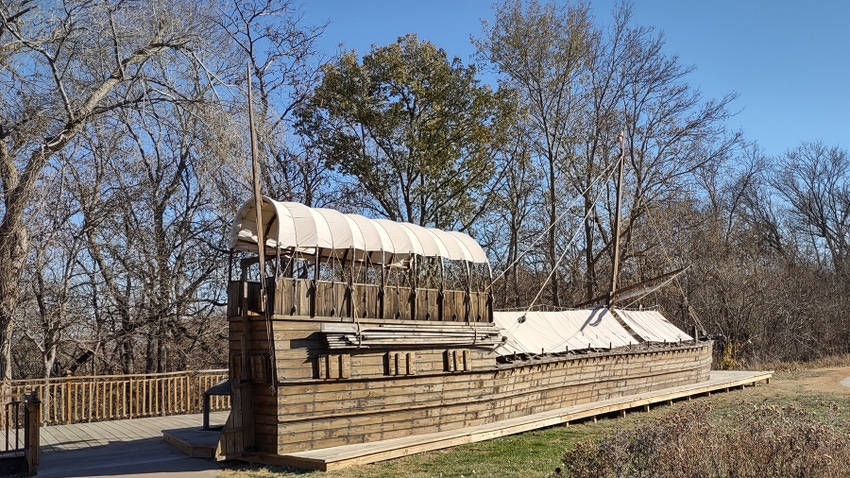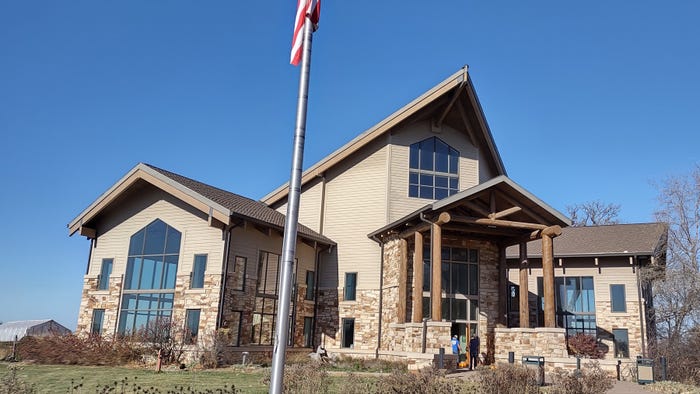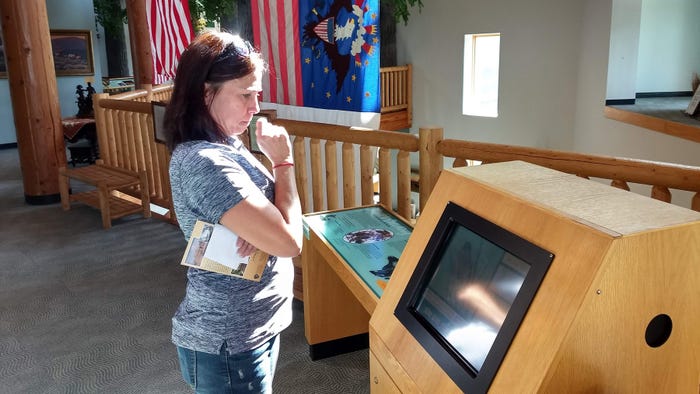
When you walk up to the Missouri River Basin Lewis and Clark Interpretive Center on 79 acres on a scenic wooded bluff above the Missouri River outside Nebraska City, one of the first things you notice is a life-sized keelboat.
It is just like the one used by Capts. Meriwether Lewis and William Clark and their Corps of Discovery in their expedition up the Missouri River from 1804 to 1806.
But the focus of this interpretive center is a little different from others along the Lewis and Clark National Historic Trail because it highlights the wonderful scientific discoveries of the captains and their team in that historic endeavor, which included 178 new plants and 122 new animals.

FOCUS ON SCIENCE: The scientific discoveries of the expedition are part of the focus of exhibits in the three-story, 12,000-square-foot visitor center, which also houses a gift shop.
The grounds include a three-story, 12,000-square-foot visitor center opened in 2004, where guests can explore the wildlife and flora of the region, and they can see the world as the captains saw it when they passed through the area first in 1804 and again when they returned to St. Louis in 1806.
The center is operated by the Missouri River Basin Lewis and Clark Interpretive Trail and Visitor Center Foundation, an independent, locally managed nonprofit 501(c)(3) foundation, in partnership with the National Park Service.
Expert assistance
The exhibits have been developed with help from Gary Moulton, perhaps the nation’s most renowned scholar when it comes to the journals of Lewis and Clark, who served as the center’s first in-resident scholar.
Exhibits not only cover the boats they used, but also the fish, birds, plants and animals found along the way, in addition to the medicine Lewis used to treat ailments and injuries during their arduous journey.

ON DISPLAY: Artifacts and displays relating the history of the famous expedition are interactive, family-friendly, and easily describe the adventures and discoveries of the two-year, often-hazardous trek.
In addition, there is a full-sized earth lodge replica on the site, along with trails of the beautiful, wooded location, allowing visitors to literally “walk in the footsteps” of Lewis and Clark, and view many of the same plants and wildlife they saw when they first visited this area.
Trails include the Meadow Trail, Earth Lodge Trail, Birding Trail, River Overlook and Limestone Bluff Trail.
Learn more about this site at lewisandclarkvisitorcenter.org.
About the Author(s)
You May Also Like






